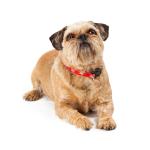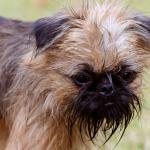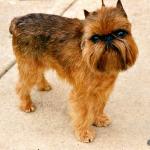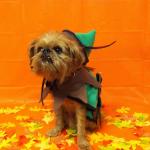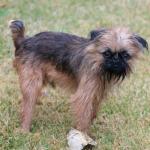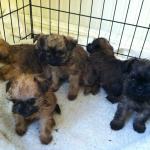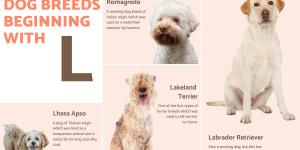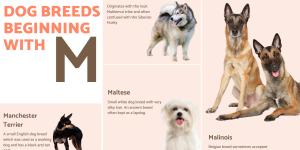Brussels Griffon
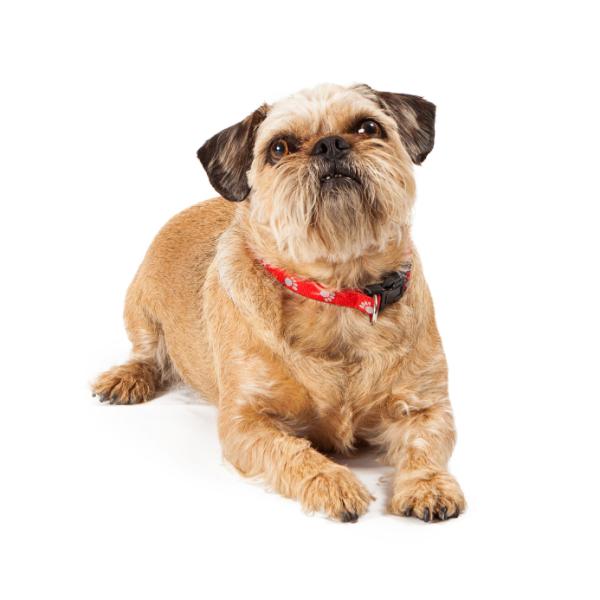
The Brussels griffon, the Belgian griffon and the petit brabançon, are companion dogs from the Belgian city of Brussels. It can be said that they are in fact three breeds in one, since they only differ by color and hair type.
In fact, although the International Cynological Federation (FCI) considers these dogs as three separate breeds, other organizations such as the American Kennel Club and the English Kennel Club recognize three varieties of a single breed called Brussels Griffon.
If you are thinking of adopting one of these three breeds of dogs, this AnimalWised breed file will tell you everything you need to know about the Brussels Griffon. We will be discussing its origin, physical characteristics, temperament, health and care.
- Europe
- Belgium
- Group IX
- 5-14
- 14-18
- 18-22
- 22-27
- 27-31
- More than 31
- 2-7
- 7-22
- 22-55
- 55-100
- 100-220
- 8-10
- 10-12
- 12-14
- 15-20
- Low
- Meidum
- High
Origin
The Brussels griffon, like the Belgian griffon and the petit brabançon, are three dog breeds that descend from the "Smousje", an old terrier dog with hard hair that lived in Brussels. The ‘Smousje’ breed were used to kill rats and mice in stables. During the nineteenth century, these Belgian dogs were crossed with pugs and King Charles spaniels, giving rise to the modern Brussels griffon, Belgian griffon and petits brabançons.
The popularity of the three breeds suddenly grew in Belgium and throughout Europe when Queen María Enriqueta ventured into breeding and adopted these animals. . However, the subsequent two world wars almost extinguished the Brussels griffon, Belgian griffonand the petit brabançon. Fortunately for the European cynophilia, some English breeders managed to rescue these breeds. However, they never truly recovered their previous popularity.
Today, these three Belgian company dogs are common as pets and show dogs. Despite their little exposure, thankfully they are not in danger of disappearing.
Physical Characteristics
Their height at the withers is not indicated in the FCI standard of any of these three dog breeds. However, both the Brussels, Belgian and petit brabançon griffons usually measure between 18 and 20 centimeters in size and have an ideal weight of 3.5 to 6 kilograms. These dogs are small, robust and almost square in body profile. But, despite their small size and broad chest, they move elegantly.
Its head is its most striking characteristic. In all three cases, its head is large, wide and round. It has a very short snout with a marked black nose. It has large, round and dark eyes. According to the FCI standard, its eyes should not be prominent, however, this standard is not always met. It has small ears of high insertion which are well separated from each other. Unfortunately, the FCI accepts amputated ears, despite this practice causing pain and detriment to the animal.
Its tail is of high insertion and is usually carried upwards. Unfortunately in this case, the FCI standard still accepts amputated tails even when there is no strong reason for it. Fortunately, the custom of amputating tails and ears for "aesthetic" reasons is disappearing and is already illegal in some countries.
The fur is what distinguishes the three breeds. The Brussels griffon has a hard, long, slightly wavy outer layer with a thin inner layer of hair. The accepted colors of this breed are red, however, black on its head can also be a physical characteristics.
Character
These three little dogs are very similar when it comes to their temperament and behavioral characteristics. In general, they are active, alert and courageous dogs who tend to attach to one person. Many of these dogs can be somewhat nervous.
Although Brussels, Belgians and petits brabançons can be friendly and playful, they can also be shy or aggressive when they have not been properly socialized. These breeds can be more difficult to socialize than other companion dogs, as their character is strong and reckless. For this reason they may come into conflict with other dogs and people who try to dominate them. However, when these dogs are socialized correctly from an early age, they can willingly tolerate other dogs, other animals and strangers.
Since these dogs need a lot of company, they tend to follow around the person whom they have attached to. These dogs, if subject to the wrong environment, can easily develop behavioral problems. They can become barkers and suffer easily from separation anxiety, especially if they spend a lot of time isolated.
Despite these potential problems, the Brussels griffon and its canine cousins are excellent pets for adults who have time to dedicate. They are not good pets for new owners because they demand a lot of attention. These dogs are also not good pets for families with children because these dogs can react badly to noises and sudden movements.
Care
The coat care differs for each griffon. For Belgian and Brussels griffons, it is necessary to brush their hair two to three times a week. They also need to be hair stripped (manually remove dead hair) about three times a year.
The three breed are very active and need a good dose of physical exercise. However, because of their size they can practice this exercise indoors. However, it is still important to walk these dogs daily and offer them some time to play. It is necessary to take into account that they are flat-snouted dogs and therefore susceptible to thermal shocks. Therefore, they should not exercise excessively in high temperatures or very humid environments.
These breeds have a high need for company and attention. All three breeds need to spend time with their selected owner which they priorities. These dogs should not live in gardens or patios, as they are indoor dogs. They adapt well to living in an apartment.
Education
In addition to correct socialization, canine training is very important for these three breeds. It is necessary to be able to control these small dogs, specifically because of their strong personalities. Traditional training, based on dominance and punishments, does not work well with these breeds. In fact, it can generate more conflict than benefits. We recommend using positive training styles with these breeds, such as clicker training.
Health
In general, these two griffons and the petit brabançon are healthy animals. They are not as susceptible to diseases like some other dogs. However, it is worth knowing some common health problems that these three breeds can face. Among such problems are: stenotic nostrils, exophthalmia (protrusion of the eyeball), eyeball lesions, cataracts, progressive retinal atrophy, patellar dislocation and distichiasis.
Brussels Griffon photos
